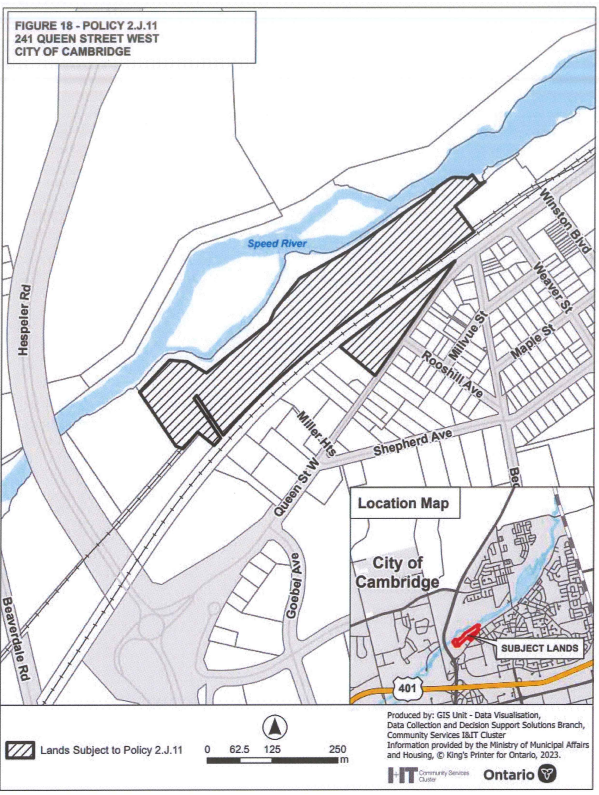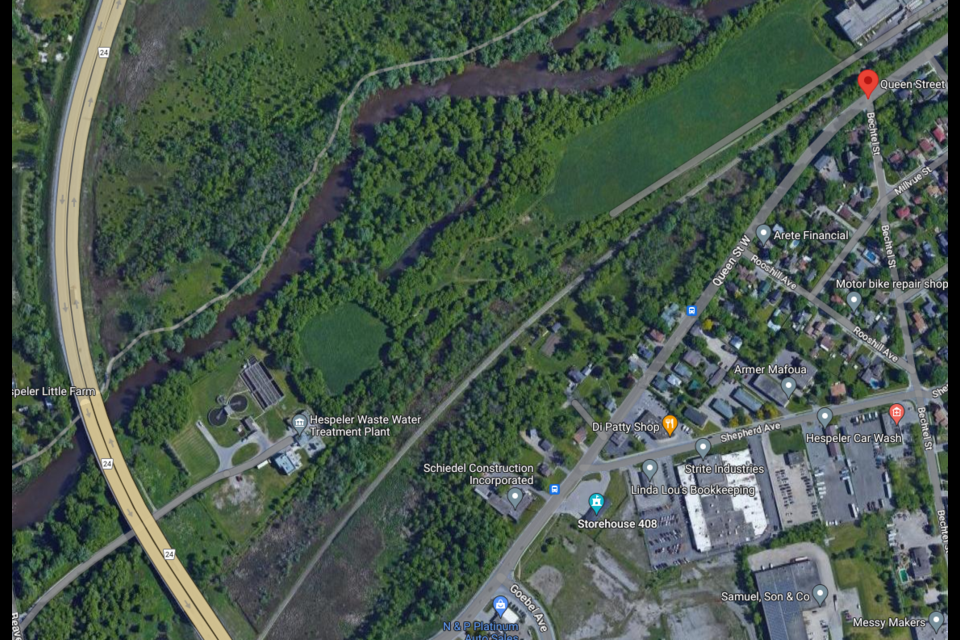The province has implemented changes to the Region of Waterloo's official plan that open the door for high-density development along the Speed River in Hespeler, and other areas in Cambridge, to accommodate residential growth and employment.
In its decision, which was handed down Tuesday, the province says it made 12 modifications to the region's official plan to address provincial policy direction around housing, growth and employment by establishing a planning framework to accommodate forecasted population and employment growth to the year 2051.
The decision from the Ministry of Municipal Affairs and Housing is final and not subject to appeal.
The move could impact Hespeler in the most noticeable way by creating a new policy area that allows for high-density residential and institutional uses.
New provisions added to the amended OP include limiting high rises in the area to a maximum height of 85 metres, inclusive of mechanical structures, and boosting the maximum lot coverage to 80 per cent. The policy does not limit the number of units per building and requires no minimum lot frontage.
The land, most of which lies in a floodplain, is identified in the new policy area between the former Silknit textile mill, which is already being redeveloped for residential use, and the Hespeler Wastewater Treatment Plant.
The land is bordered by the rail corridor and the Speed River and includes a triangle of land fronting Queen Street West. It is currently zoned for general industrial uses.

The city's director of planning Lisa Prime said the property had a Minister's Zoning Order and mixed-use residential development attached to it at one point, but it was withdrawn before she started working for the city.
She said the land is within the regeneration area identified in the region's plan and intended for residential development.
Prime also confirmed there is a concept plan for the site but it's not well defined. Should there be an application to develop the property, it will go through the same planning process as any other development, but won't be subject to typical zoning provisions established by the city or region.
Since it's within the floodplain, provincial policy around that remains a factor and the Grand River Conservation Authority would be invited to comment despite the implications of Bill 23, which limits the powers of conservation authorities
"Of course we don't have all the details and there's the Bill 23 implications of changes to regional planning as well that will play into everything," she said.
CambridgeToday reached out to ward councillor Mike Devine for comment but did not immediately get a response.
The provincial changes also allows for development on land located between the current urban boundary limit and countryside line, around the Waterloo Region International Airport and the city's east-side business park near Pinebush and Townline roads. Those lands will continue to be developed as provincially significant employment zones.
Around the Delta intersection, where Coronation Boulevard meets Dundas Street, Hespeler Road and Water Street North, the provincial amendments released this week lower proposed density requirements by decreasing the current minimum density target of 160 residents and jobs combined per hectare to a minimum of 120.
The Delta neighbourhood is considered a Major Transit Station Area, which is generally defined as the area within about a 10-minute walk to a major transit station or stop.
Prime said changes there closely align with what the region and city expected to happen with regards to higher densities around MTSAs.
And mass transit for Cambridge could also mean Bus Rapid Transit now that the anticipated cost of extending the ION LRT through the city has reached $4.5 billion, a figure many believe is out of reach.
Prime said ideas around transit will continue to evolve and that despite any anticipated roadblocks, it's important for the city to have growth and intensification targets that are consistent with the expectation that mass transit will be part of it, whatever the future might look like.
Prime said she didn't necessarily expect as many changes for Cambridge as we saw tabled by the province this week, but she thinks they're all manageable in the context of future growth and expectations for intensification.
There is going to be lots of detailed planning to come out of these changes, she said.
Speaking at a press conference at the Kitchener site of the new University of Waterloo Innovation Arena this morning, Premier Doug Ford was asked about the changes and the undemocratic nature of the province's move.
He said the province tries to work collaboratively with municipalities on planning issues but "people can't just keep saying 'no, we don't want people.'"
"We have to grow. We have more land than we know what to do with here in Ontario. It's a massive, massive region. It's almost twice the size of Texas, so we need to make sure to drive the economy but more importantly create more affordable and obtainable homes."
In a press release sent out late Thursday, Ontario Green Party leader Mike Schreiner said the region can't afford to service the province's move to "impose destructive sprawl" nor can people who want to call Waterloo region home.
"Everyone – from planning experts to the government’s own housing task force – has been crystal clear that there is more than enough land approved for development within existing boundaries to build the homes people can afford – in communities where people want to live, work and play," he said.
"And still the Ford government continues to overturn local decision-making in a dangerous scheme that paves over critical farmlands and wetlands already in short supply."
